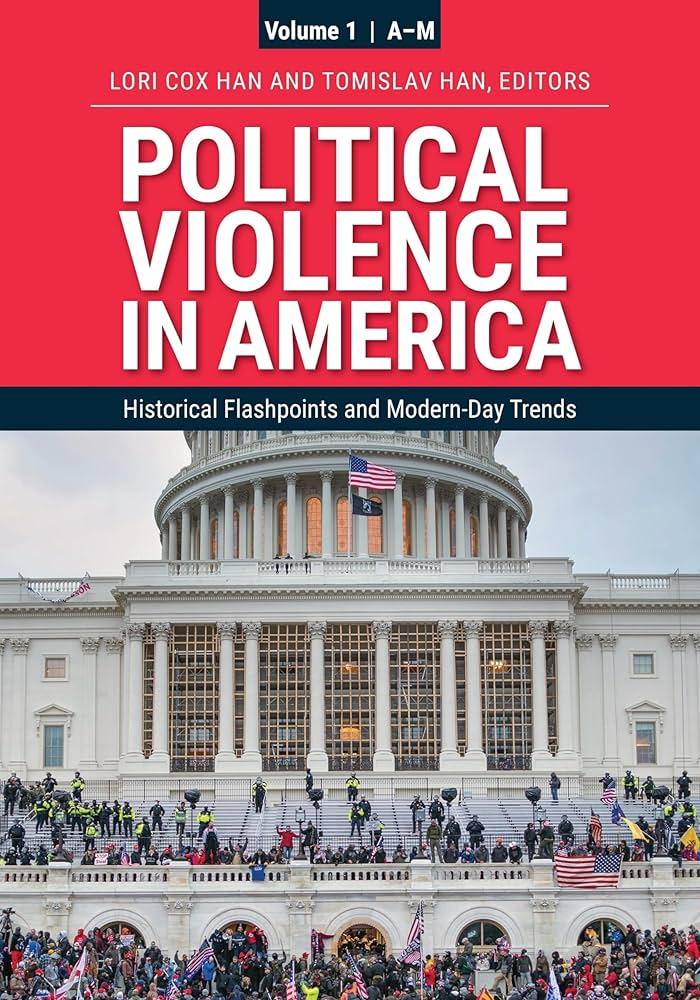Unraveling Political Violence in Contemporary America: Causes, Justifications, and Prevention
Tracing the Evolution of Political Violence in the United States
Throughout modern American history, political violence has repeatedly surfaced as a significant and troubling phenomenon. Manifesting in diverse ways—from violent protests and targeted assassinations to large-scale attacks on government institutions—these acts underscore profound societal fractures. Rooted in ideological conflicts, racial discord, and economic grievances, political violence reflects the nation’s ongoing struggles with systemic inequities and cultural upheaval.
Examining pivotal moments helps illuminate the multifaceted nature of this issue:
- 1970 Kent State Shootings – National Guard troops opened fire on student protesters opposing the Vietnam War, intensifying public outrage.
- 2017 Charlottesville Rally Violence – Clashes erupted between white supremacist groups and counter-protesters, culminating in a deadly vehicular attack.
- January 6, 2021 Capitol Breach – A violent mob stormed the U.S. Capitol, driven by unfounded claims of election fraud and deep political polarization.
| Incident | Year | Underlying Cause |
|---|---|---|
| Kent State Shootings | 1970 | Anti-War Protest |
| Charlottesville Violence | 2017 | Racial and Ideological Conflict |
| Capitol Breach | 2021 | Electoral Dispute |
Decoding the Drivers of Political Extremism: Ideology, Identity, and Societal Pressures
Political extremism in the U.S. is often propelled by entrenched ideological rifts where individuals or factions perceive themselves as marginalized or under threat. These motivations extend beyond mere policy disagreements, intertwining with identity politics, perceived systemic failures, and a yearning for transformative change. Extremists frequently rationalize their actions as necessary defenses of core principles or as corrective measures against institutional shortcomings.
Several social dynamics exacerbate these tensions, including economic uncertainty, racial disparities, and eroding trust in public institutions. The proliferation of misinformation and incendiary rhetoric further intensifies radicalization. Common catalysts include:
- Feelings of political or social alienation
- Rapid cultural and demographic shifts
- Disenchantment with democratic governance
- Influence of extremist networks both online and offline
| Core Motivation | Social Catalyst | Typical Rationale |
|---|---|---|
| Identity-Based Politics | Community divisions | Safeguarding cultural heritage |
| Economic Insecurity | Unemployment, wealth gaps | Seeking economic justice |
| Mistrust of Government | Perceived corruption | Demanding transparency and reform |
| Cultural Anxiety | Changing demographics | Resistance to societal transformation |
How Media and Political Discourse Shape Justifications for Violence
Those who commit acts of political violence often draw heavily on media narratives and charged political language to legitimize their behavior. By portraying their cause as a defense against existential threats or systemic oppression—frequently magnified by sensationalist media—they cultivate a feedback loop of grievance and urgency. This is amplified by polarized news outlets, social media echo chambers, and inflammatory political speeches, which collectively blur the boundaries between legitimate protest and violent extremism.
The table below outlines prevalent justifications alongside the roles played by media framing and political rhetoric:
| Claimed Justification | Media Role | Political Messaging |
|---|---|---|
| Upholding Freedom | Depiction of government as oppressive | Calls to resist tyranny and defend liberty |
| Preserving Cultural Identity | Emphasis on racial or cultural narratives | Advocacy for traditional values |
| Combating Corruption | Exposure of political scandals | Demands for systemic cleansing |
| Responding to Perceived Threats | Focus on crime and immigration issues | Warnings about national decline |
- Amplification of fear: Sensational media coverage heightens perceived dangers.
- Fostering siege mentality: Rhetoric frames groups as embattled defenders.
- Justifying violence: Aggression is portrayed as a necessary response.
Combating Political Violence: Strategies for Prevention and Community Collaboration
Mitigating political violence requires a comprehensive strategy that integrates vigilant law enforcement with active community participation. Early detection of radicalization signs—especially in digital spaces—and addressing localized conflicts are vital. Building mutual trust between authorities and communities encourages reporting of suspicious behavior without fear of retaliation. Effective approaches include:
- Educational initiatives fostering respectful dialogue and understanding across political divides.
- Interdisciplinary task forces combining law enforcement, mental health experts, and civic leaders.
- Transparency and communication to keep citizens informed and engaged in security efforts.
Recent data highlights regional variations in the success of these measures, underscoring areas where enhanced coordination is needed:
| Region | Level of Community Involvement | Preventative Measures | Percentage of Reported Incidents |
|---|---|---|---|
| Mid-Atlantic | Strong | Comprehensive | 12% |
| Southwest | Moderate | Developing | 30% |
| Pacific Northwest | High | Advanced | 8% |
| Great Plains | Moderate | Improving | 20% |
Final Thoughts
As political violence continues to challenge the United States, gaining a nuanced understanding of its root causes and the narratives that justify it is imperative. From historical flashpoints to recent upheavals, these episodes reveal the deep-seated divisions shaping the nation’s political and social landscape. Addressing these challenges through informed dialogue, community engagement, and transparent governance is essential to prevent escalation and promote peaceful democratic processes. Our commitment remains to provide ongoing, insightful coverage of this critical issue influencing America’s present and future.







